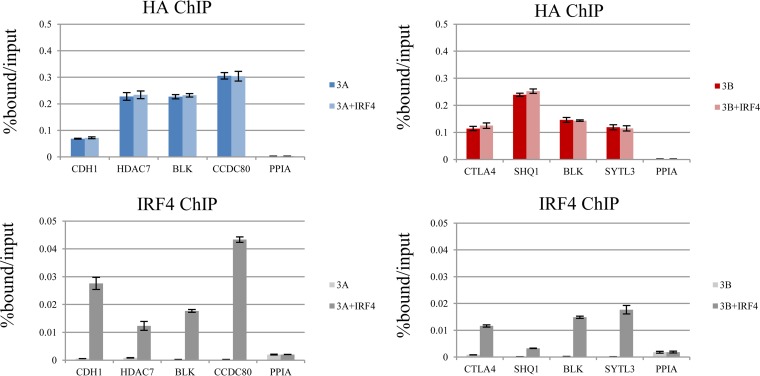FIG 9.
IRF4 cobinding does not promote EBNA3A or EBNA3B at specific sites in the human genome. (A) (Top) ChIP-qPCR assay for EBNA3A (HA) in BJAB cells expressing Flag-HA-tagged EBNA3A alone or with IRF4. (Bottom) ChIP-qPCR assay for IRF4 from the same cells. Binding was assessed at multiple sites cobound by EBNA3A and IRF4 in LCLs (CDH1, HDAC7, BLK, and CCDC80). A site near the PPIA that is not bound by EBNAs or IRF4 was included as a negative control. (B) (Top) ChIP-qPCR assay for EBNA3B (HA) in BJAB cells expressing Flag-HA-tagged EBNA3B alone or with IRF4. (Bottom) IRF4 ChIP-qPCR. Representative EBNA3B/IRF4-cobound sites based on LCL data were selected (CTLA4, SHQ1, BLK, and SYTL3), as well as the PPIA negative control. All qPCR signals are reported as percentages of DNA ChIPed relative to the input. The results are shown as means ± SEM of three independent experiments.

